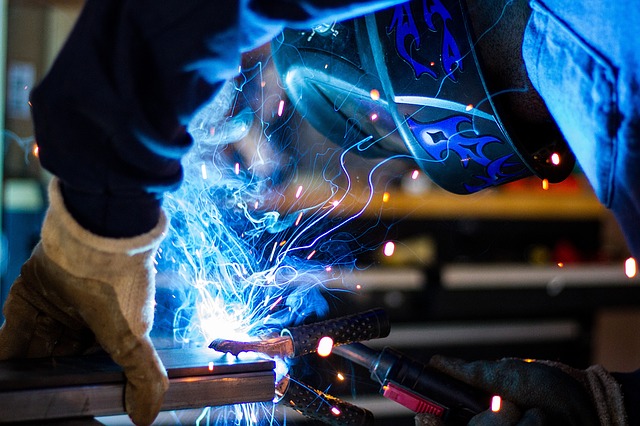Welding
Welding is a technique that can be used to join metallic components through the application of heat. It produces a secure and strong joint by combining two metals into one rather than other processes such as brazing and soldering that bond the pieces together.
Welded joints must be carefully designed with the expected forces, and the type and magnitude of the loads to which it will be subject in mind. The type of joint required – whether butt, lap, T, corner or edge – will determine the type of welding process.
Pressure welding involves applying external pressure to produce joints at temperatures either above or below the melting point. This technique is typically used on highly-ductile metals or those that become more ductile with the application of increasing heat. The two metallic components must be very clean and free of oxides to ensure the strongest possible joint. Some of the most common pressure welding processes include:
- Induction welding: For pipes.
- Inertial welding: For high-strength alloys.
- Cold pressure welding: For creating joints between sheets, wires, and so on.
- Explosive (or percussion) welding: For joints between dissimilar metals.
- Ultrasonic welding: For thin sheets.
- Friction welding: For joints between similar metals.
Fusion welding involves heating the edges of the metal components to above the melting point. No external pressure is used and a filler metal may or may not be used, as may inert gases be used, which can enhance the quality of the weld. Once the fused weld pool has solidified, the welded joint is complete. Suitable metals for fusion welding are those that are, to a certain level, mutually soluble in a solid state.
Welding operatives must be equipped with welding gloves, suitable eye protection, and a fire extinguisher. Sparks can be produced when welding, and so the area around the activity must be kept clear of flammable items.
[edit] Related articles on Designing Buildings Wiki
- Adhesive.
- Bolt.
- Cable tie.
- Clamp
- Cramp.
- Failure of metals.
- Industrial fasteners market.
- Inspections focus on occupational lung disease.
- Nut.
- Major cast metal components.
- Metal fabrication.
- Rebar.
- Safe2Torch.
- Screw.
- Soldering.
- Structural steelwork.
- The importance of welding assurance.
- Types of fixings.
- Washer.
- Welding consumables.
- Welding equipment market.
- Welding products market.
Featured articles and news
RTPI leader to become new CIOB Chief Executive Officer
Dr Victoria Hills MRTPI, FICE to take over after Caroline Gumble’s departure.
Social and affordable housing, a long term plan for delivery
The “Delivering a Decade of Renewal for Social and Affordable Housing” strategy sets out future path.
A change to adoptive architecture
Effects of global weather warming on architectural detailing, material choice and human interaction.
The proposed publicly owned and backed subsidiary of Homes England, to facilitate new homes.
How big is the problem and what can we do to mitigate the effects?
Overheating guidance and tools for building designers
A number of cool guides to help with the heat.
The UK's Modern Industrial Strategy: A 10 year plan
Previous consultation criticism, current key elements and general support with some persisting reservations.
Building Safety Regulator reforms
New roles, new staff and a new fast track service pave the way for a single construction regulator.
Architectural Technologist CPDs and Communications
CIAT CPD… and how you can do it!
Cooling centres and cool spaces
Managing extreme heat in cities by directing the public to places for heat stress relief and water sources.
Winter gardens: A brief history and warm variations
Extending the season with glass in different forms and terms.
Restoring Great Yarmouth's Winter Gardens
Transforming one of the least sustainable constructions imaginable.
Construction Skills Mission Board launch sector drive
Newly formed government and industry collaboration set strategy for recruiting an additional 100,000 construction workers a year.
New Architects Code comes into effect in September 2025
ARB Architects Code of Conduct and Practice available with ongoing consultation regarding guidance.
Welsh Skills Body (Medr) launches ambitious plan
The new skills body brings together funding and regulation of tertiary education and research for the devolved nation.
Paul Gandy FCIOB announced as next CIOB President
Former Tilbury Douglas CEO takes helm.
UK Infrastructure: A 10 Year Strategy. In brief with reactions
With the National Infrastructure and Service Transformation Authority (NISTA).























